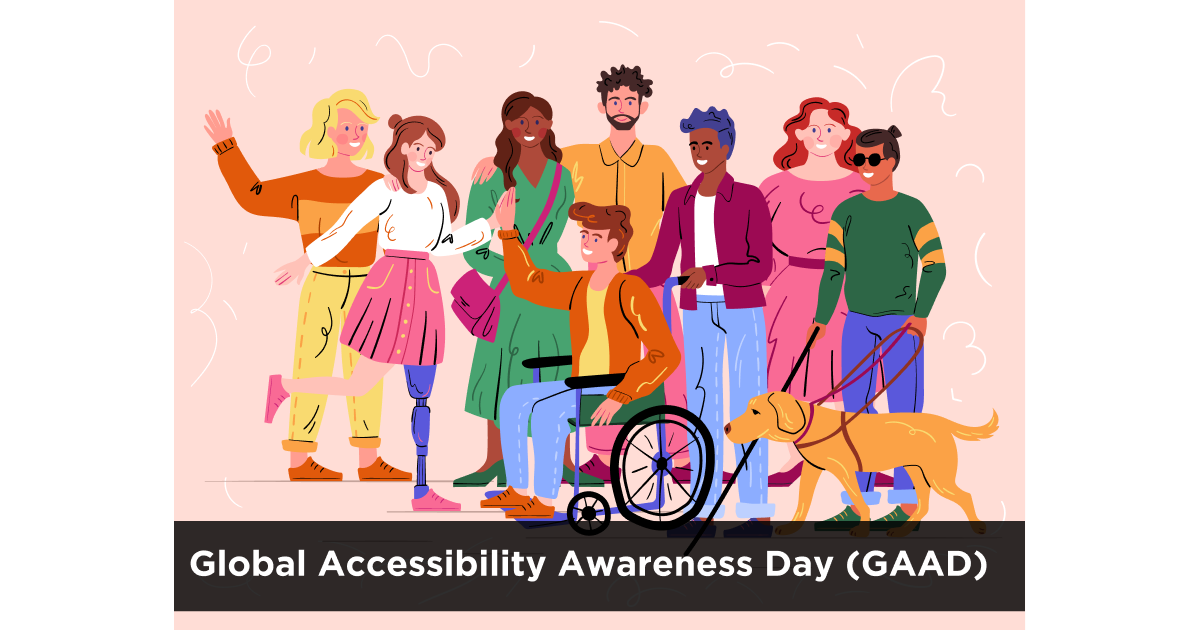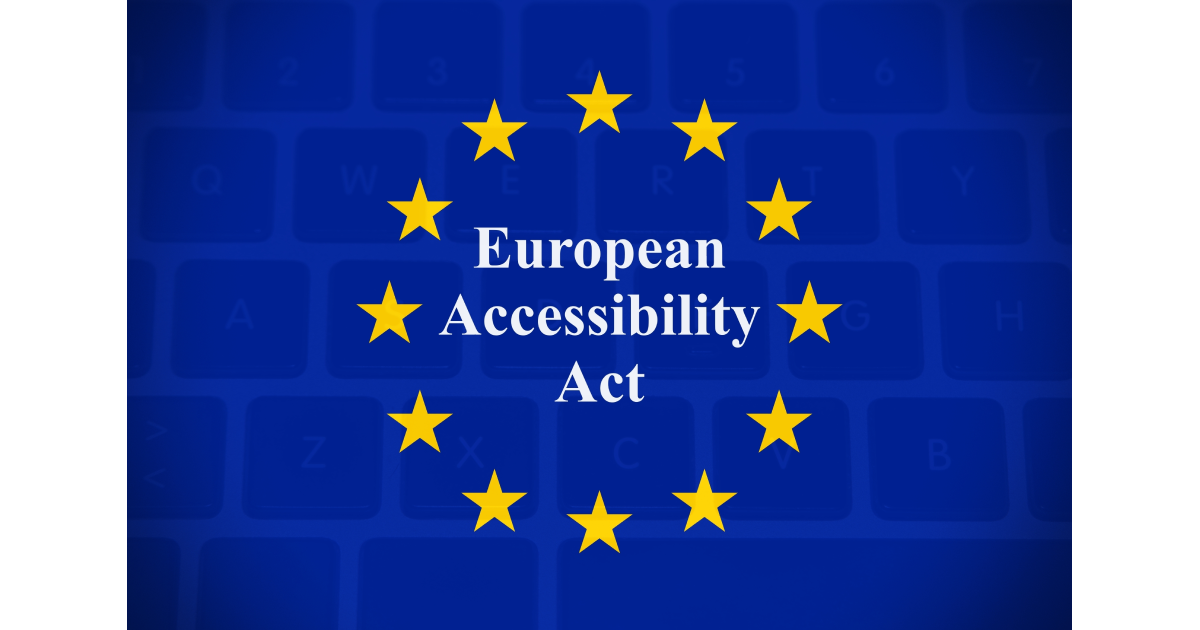Today is the third Thursday of May, or Global Accessibility Awareness Day (GAAD). GAAD's mission is to promote the importance of digital accessibility, inclusive design, and raise awareness of the more than 1 billion people with disabilities.
For Global Accessibility Awareness Day, we reached out to members of the accessibility and disability community, disability inclusion strategists, notable speakers, and influential thought leaders. We asked them a seemingly simple question, "What is digital accessibility?"
So, what is digital accessibility? We've shared the video answers we received in this blog, including some of our favorite quotes and the full transcript from each video featured.
Enjoy, and Happy GAAD 2023!
Meryl Evans, CPACC (deaf), Professional Speaker and Disability Inclusion Advocate
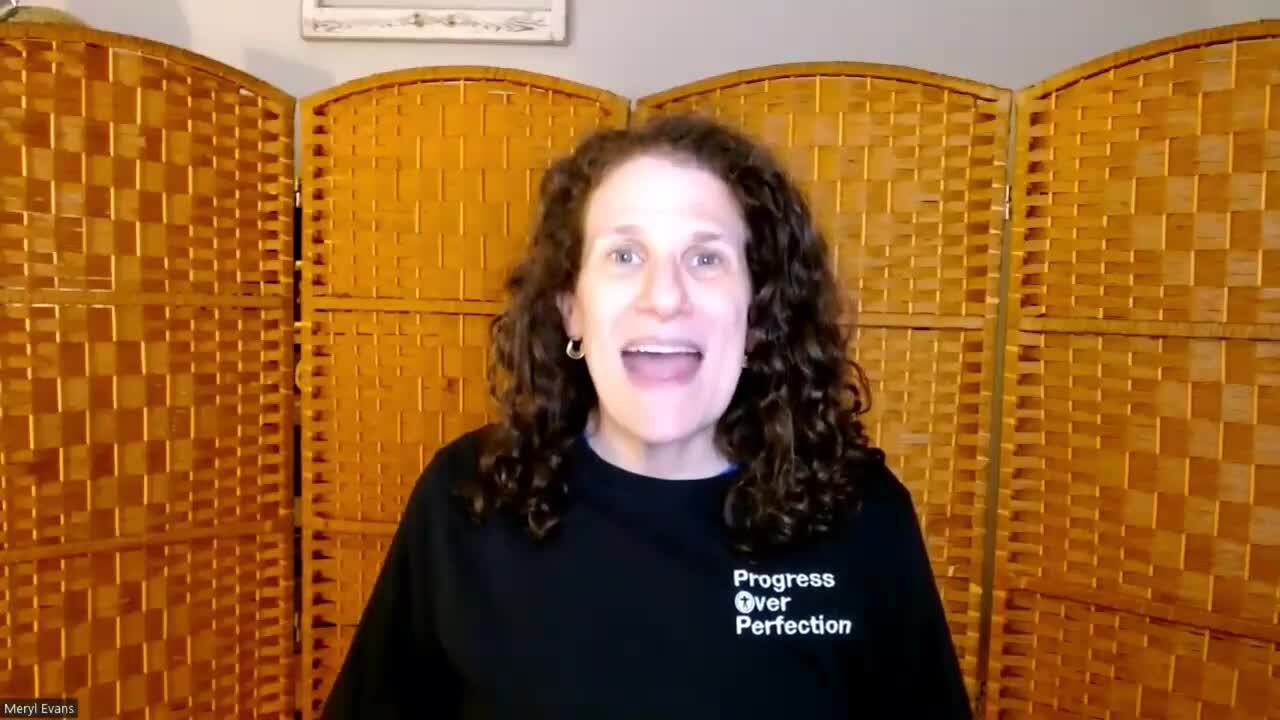
Alt-text: Meryl Evans, speaks to the camera about the importance of digital accessibility.
"Accessibility gives everyone equal access regardless of the circumstances. Accessibility gives people choices."
Transcript: Digital accessibility is providing digital products everyone can access, navigate, and interact with in some way without barriers. Different people need different things to accomplish their tasks. It doesn't matter how many people live with a disability. Everyone benefits from accessibility. It could be because of temporary or situational impairment. It could be because of personal preference. Remember the curb-cut effect. It shows the value of making everything accessible. Accessibility gives everyone equal access regardless of the circumstances. Accessibility gives people choices.
Debra Ruh, CEO at Ruh Global IMPACT, Executive Chair, Billion Strong, and Host of Human Potential at Work
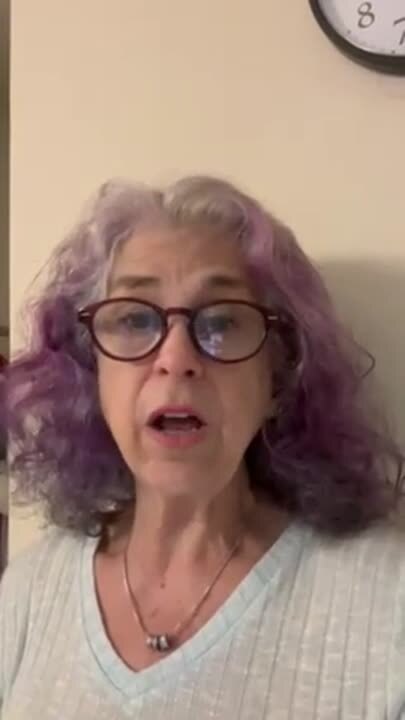
Alt text: Debra Ruh speaks to the camera about the relationship between disability inclusion and digital accessibility.
"It's very important that we all celebrate the Global Accessibility Awareness Day, but we also work hard to make sure that nobody is left out from now on."
Transcript: Hi, everyone. My name is Debra Ruh, and I wanted to record a quick video for UsableNet to celebrate GAAD, Global Accessibility Awareness Day, 2023. Let's all celebrate it because the world is going to work better for all of us when all people are meaningfully included. So it's very important that we make sure that all technology is fully accessible. We're about to build the metaverse. Yay! But we know how to make it fully accessible.
So let's all commit to making sure that we never do disability inclusion without considering accessibility, and that we understand that, yes, people with disabilities benefit when things are fully accessible, but so do every other person. So it's very important that we all celebrate the Global Accessibility Awareness Day, but we also work hard to make sure that nobody is left out from now on.
Charlie Triplett, Sr. Accessibility Coach with 20 years of UX design and UI engineering experience; author of TheBookOnAccessibility.com
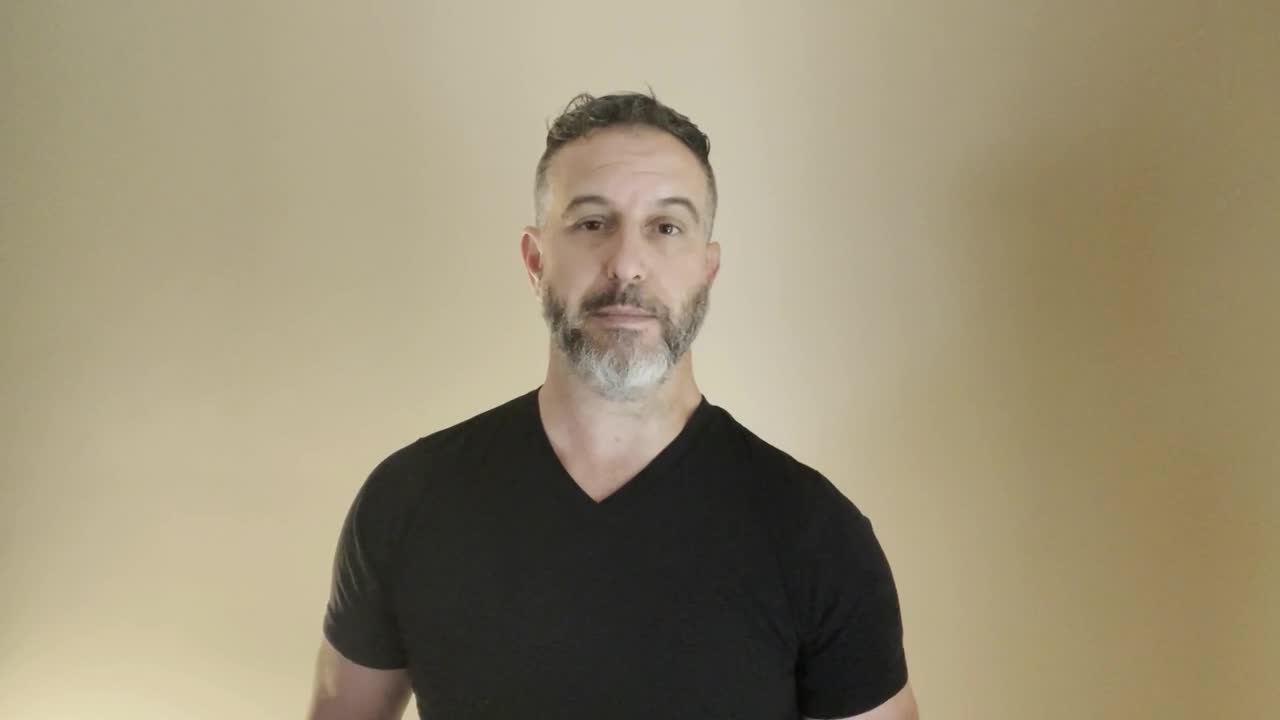
Alt-text: Charlie Triplett speaks to camera about accessibility and innovation within a greater historical context.
"Innovation. That's what accessibility means to me. . . if we can start putting accessibility first in our design and development processes, we're going to make better products that are more innovative for everybody."
Transcript: Innovation. That's what accessibility means to me. Hi, my name is Charlie Triplett. I am one of the lucky people that gets to talk about accessibility every day at my job. Now, what do I mean by innovation, meaning accessibility to me? If you look at the history of where innovation comes from, it doesn't always come from someone sitting in a deep, dark lab doing research all day. Many of the things that we enjoy today in consumer products actually came from people solving accessibility problems or extreme use case problems as I like to call them.
Now, what's an extreme use case problem? Race cars are a perfect example of an extreme use case that leads to innovation. Tell me, what would make you nervous about driving this car at full speed around a track? Maybe it's the gas tank sitting right behind the driver or the little skinny tires don't really feel like they grip the road. How about that lack of a roll cage? I mean, look at this car. They haven't even invented their rearview mirror yet. Believe it or not, the rearview mirror was invented in a racing environment because it was a safety feature. And eventually, they got roll cages and they got sophisticated suspension systems that allowed the car to grip the road in wet or rough conditions. All of these features were created for extreme use cases and then made their way to luxury cars and to passenger cars that we all drive every day.
Accessibility is much like that if we treat it like an extreme use case. And notice I said extreme use case, not an edge case. When we design for extreme use cases, we make a better product for everybody that's more innovative, more robust, more heavily tested, and just a better experience for everybody that encounters it. I don't know of a better way to find that out than to make things accessible because if we can start putting accessibility first in our design and development processes, we're going to make better products that are more innovative for everybody."
Minh N. Vu, Thought leader on ADA Title III issues and Partner at Seyfarth
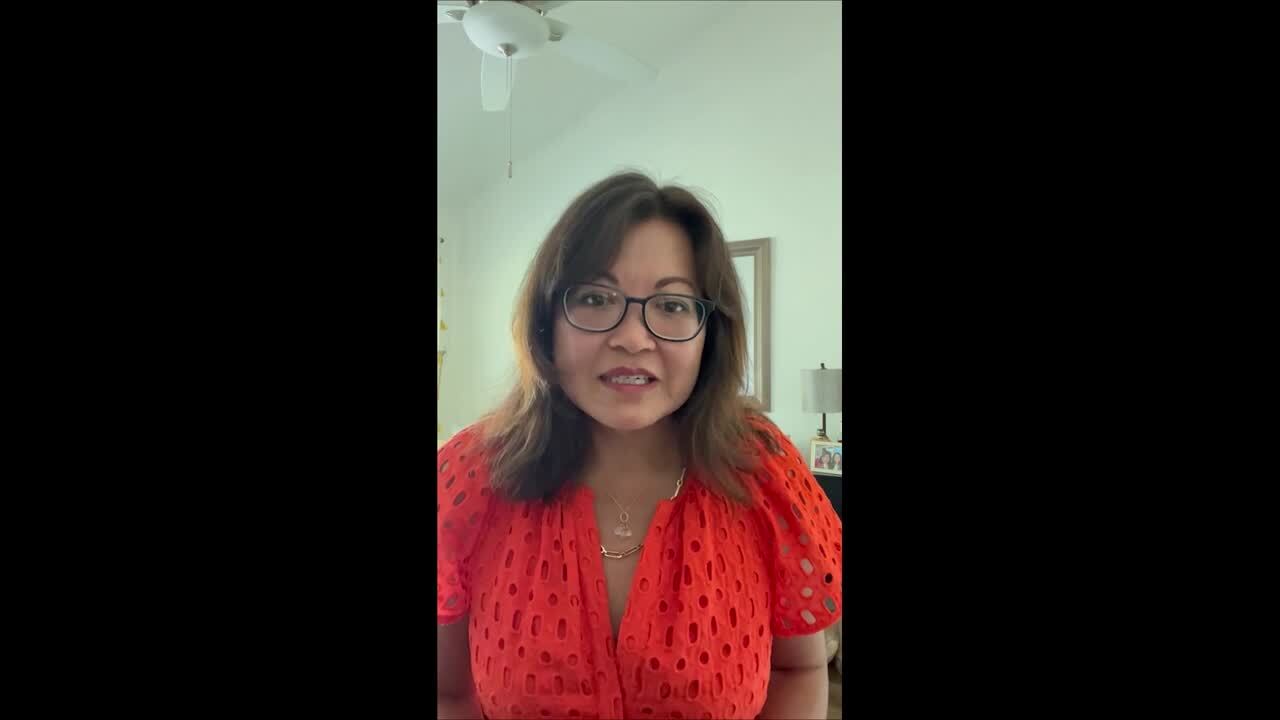
Alt-text: Minh N Vu, speaks to the camera and shares her idea on how to make the world more accessible- action from the government.
"Let's get Congress to pass a law requiring technology companies that have a lot of resources to create accessible technology, or rather, to ensure that the technology that they sell is accessible."
Transcript: Hi, everyone. For Global Accessibility Awareness Day, I thought I would share my thought on how to make the world a more accessible place. So businesses that open their doors to the public currently have an obligation to ensure effective communication. But in our work, we found that most of them are not in the business of creating accessible technology. They're in the business of creating great hospitality or cooking delicious food or, you know, selling beautiful items. What they're not in the business of is coding accessible websites. For that, they look to others. They look to technology companies to deliver those products and services.
So here's my very simple idea. Let's get Congress to pass a law requiring technology companies that have a lot of resources to create accessible technology, or rather, to ensure that the technology that they sell is accessible. A simple concept, I think, would go a very long way towards ensuring that technology out there is accessible.
Ruth Fuller, Adaptive Technology Supervisor at Helen Keller Services
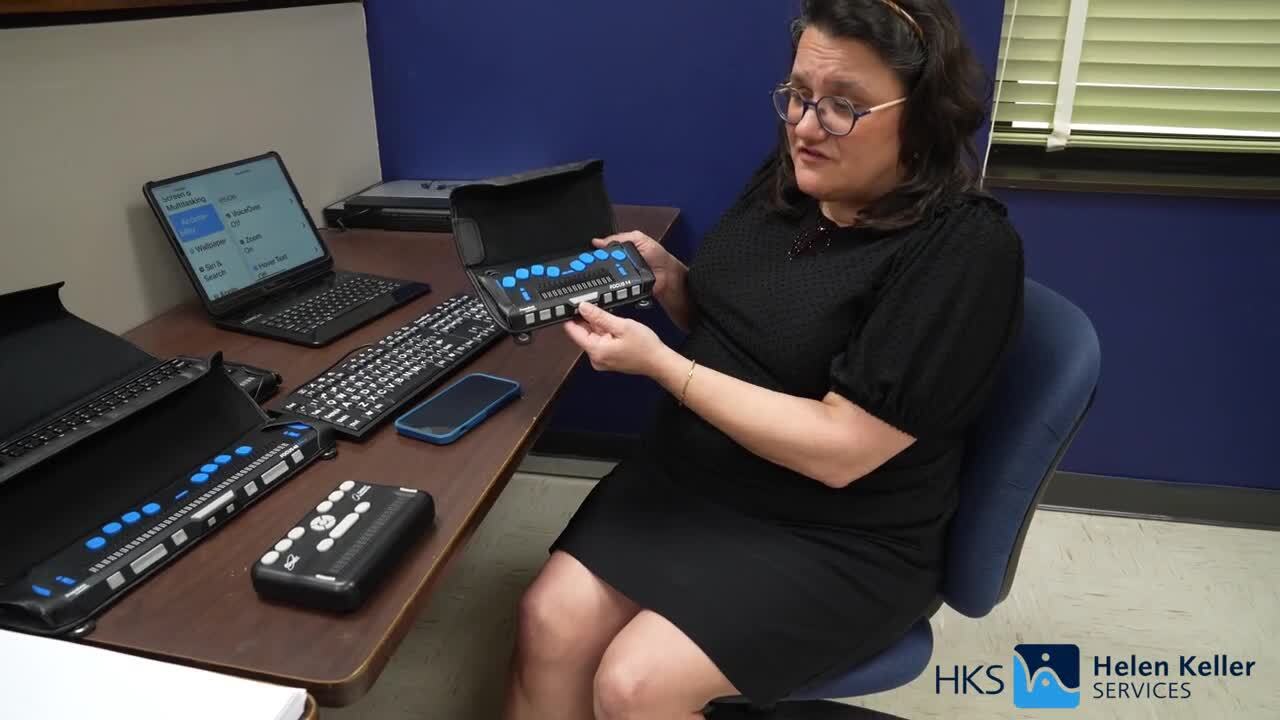
Alt-text: Ruth Fuller, Adaptive Technology Supervisor at Helen Keller Services for the Blind shares examples of assistive technology used by the disability community.
"Digital accessibility is important for everyone, especially Deaf-Blind people, because it gives them access to everything. It's not leveling the playing field. It’s letting them into the playing field. It's essential."
Transcript: Hello, my name is Ruth Fuller, and I'm the adaptive technology supervisor at Helen Keller National Center. And I'm going to talk to you today about digital accessibility and why it's so important, especially for people in the Deaf-Blind community. Thanks to the proliferation of cell phones, everything is a lot more digital today. So just like your own technology, you have personal preferences in the world of deaf-blind technology, blind technology. People can use different types of devices based on their needs and preferences. For instance, some Deaf-Blind individuals have neuropathy in their hands, and they can't really feel the cells well. So we find that the orbit 20 or the orbit 40, this device, has pins that are harder. And so we find success for students who need that. Then we have the focus display, and people who use a Braille display, many of our deaf-blind students do, they're different sizes. For instance, the focus 14: This is a smaller one. This is used for phones, for a cell phone, to access a phone. The 40 we typically use to access a computer. And again, some students benefit from having the QWERTY keyboard as well. So everybody has different tools that they use based on their needs and preferences. You can have customized keyboards like this one here by ZoomText, which has large letters so that people with low vision can see it more clearly.
Digital accessibility is important for everyone, especially Deaf-Blind people because it gives them access to everything. It's not leveling the playing field. It’s letting them into the playing field. It's essential. So we always want to make sure that our documents are accessible, that people who are Deaf-Blind can navigate them, and That there's text to explain the images and the icons. If you make your document accessible, then anyone can access it. Let me show you a Braille display that's being used right now by one of our students so he can access the Internet. So he's learning to do Google searches with his phone in Braille display. And that's why accessibility is so important because it allows Deaf-Blind individuals, just like Dylan, to access information like everyone else and also share what they have to offer.
Michael Taylor, Blog Contributor, and a blind, full-time screen reader user

Alt-text: Michael Taylor speaks to the camera about the importance of digital accessibility for his independence.
"For me, it's all about independence. . . for me to have the greatest degree of personal, financial, and professional independence, I must have full access to all the great features that technology has to offer."
Transcript: My name is Michael Taylor and I'm a marketing intern at UsableNet. In honor of Digital Accessibility Awareness Day, I'd like to speak about what digital accessibility means to me. For me, it's all about independence. So much of what we do today relies on technology. Everything from online banking to making doctor's appointments through health care portals or even shopping on e-commerce websites, so much of what we do relies on the Internet. Technology is even becoming super important in professional and school settings. For me to have the greatest degree of personal, financial, and professional independence, I must have full access to all the great features that technology offers. I am blind and a full-time screen reader user. Screen readers are specialized pieces of software that verbalize on-screen elements for the visually impaired. In order for an experience to be fully accessible to me, it must be properly optimized to work with screen readers. If a website or mobile application is not designed with accessibility, it prevents me from fully utilizing its features. I consider a digital product the most accessible when I can effectively use it without giving the process much thought. When I am able to use a digital experience with the same degree of ease and efficiency as someone without a disability, I will be able to fully maximize my potential in terms of personal independence.
Over the past few years, the industry has made enormous strides toward improved accessibility. However, there is still much work to be done. As we move toward Global Accessibility Awareness Day, I want to see digital accessibility become a primary feature of every digital experience, both new and existing. This will allow people with disabilities to have equal access to the amazing features of the digital world that modern technology unlocks. Not only will accessible web design improve digital inclusivity, but will also make it possible for people like me to enjoy the greatest degree of personal and financial independence, which is super, super important. So as we celebrate Global Accessibility Awareness Day 2023, consider hopping on the digital accessibility train. It will take us the great places, and the more people aboard, the better.
Samantha Dancey and Matt Wiggins, Leaders at TTC Global

Alt text: Split screen shows Samantha Dancey and Matt Wiggins in a conversation defining digital accessibility, Global Accessibility Awareness Day, and speaking about TTC's partnership with UsableNet.
"Digital accessibility is really all about people. At the heart of digital Accessibility is a human-centered experience."
Transcript: (Samantha Dancey): Happy Global Accessibility Awareness Day. My name is Sam Dancy and I'm the Global Accessibility Practice Lead at TTC, and I'm joined today by Matt Wiggins, who's our Australia CEO. So, Matt, I'm just going to ask you a couple of questions to share some of your thoughts on GAAD. So first off, What is digital accessibility? What does that mean to you? (Matt): Thanks. I'm happy to be here.
Digital accessibility is really all about people. At the heart of digital Accessibility is a human-centered experience. So whilst we're talking about our digital world, it means that we can all access the information we require online. So we can apply for jobs online. We can learn online. We can use online systems and processes to undertake our day-to-day tasks such as grocery shopping or banking. At TTC, we support organizations to become more inclusive and accessible to people with disabilities and every one by supporting these organizations' focus on their digital environments and understanding how it's become more accessible. One of our main mantras that TTC is that what's good for one is good for many. So when we design with accessibility in mind, everyone benefits. (Sam): Thanks, Matt. That was a great summary of what digital accessibility means to you and TTC.
So what does GAAD mean to you? Well, first Global Accessibility Awareness Day mean to you. (Matt): It's really just a fantastic opportunity to talk about digital accessibility and to raise broader awareness. So we see GAAD as a celebration and a great way for organizations like TTC and UsableNet to provide insights and learn how to become more accessible and how to enable organizations to learn from one another. (Sam): Excellent. And I know UsableNet is a valued partner of TTC in the Australia-New Zealand geographies. Is there anything you want to mention there? Yeah, we're really proud to be partners with UsableNet and we're in our third year of this very successful partnership. Now the partnership affords us the opportunity to bring the power of the AQA accessibility tool to bear in some of the testing engagements we undertake for our clients. And we're continually receiving great feedback about the benefits the tool itself delivers. So we're really delighted to continue working with UsableNet to offer such a comprehensive tooling option to organizations within Australia and New Zealand. (Sam): Thanks very much, Matt. (Matt): You're welcome.
Chris Werely, Head of Sales at UsableNet

Alt-text: Chris Werely speaks to the camera about digital accessibility and the importance of awareness and tips on how employees can raise awareness.
"So few people understand the impact of digital accessibility, the barriers that exist, and really the consequences of not thinking about people of all abilities in their decision-making process around how they create digital tools, the digital environment in this world that is increasingly relying on everything digital."
Transcript: Hi, my name is Chris Werely, Head of Sales at UsableNet. I wanted to share a few reflections on Global Accessibility Awareness Day 2023. First of all, I just want to say that I'm very thankful to work in an industry and with clients and colleagues on something that's so impactful on many levels.
As it relates to Global Accessibility Awareness Day, I think the key word I want to focus on today is really awareness. Unlike other social and technological initiatives, awareness is truly an issue here. So few people understand the impact of digital accessibility, the barriers that exist, and really the consequences of not thinking about people of all abilities in their decision-making process around how they create digital tools, the digital environment in this world that is increasingly relying on everything digital. So a huge proportion of our workforce and business owners have digital components to their businesses. Product companies, service companies, tech companies, of course, non-profits, and even our local and small businesses all have digital experiences. So decisions that we make around websites, what kind of tools our employees use, and how we market and publish content in this digital world really need to be thought about in a more inclusive way.
So a couple of tips that I have for Global Accessibility Awareness Day: One is to inquire what your company or your team is doing today around digital accessibility. Ask how you can help. If you're directly involved in a digital product, set some goals, even some small ones, around trying to figure out maybe what you can do to improve the accessibility of your product. And if this is a new topic to you, do something as easy as searching Google for 'digital accessibility.' Click on the news and read a lot of content articles that will be published around Global Accessibility Awareness Day or really any other day of the year. And I'm sure you can find a lot that will help you understand the impact, build some empathy, and maybe take some steps to make the digital world a little bit easier for everybody to use. Thanks so much.
Today, the Internet is an integral part of our everyday lives, so the mission of GAAD to raise awareness and spark conversations around digital accessibility has only become more significant.
Let's use this GAAD to embrace digital accessibility and take the first steps toward making the world more inclusive: discussing digital accessibility and raising support and awareness.
We hope this blog encourages you to join the conversation. What does digital accessibility mean to you? Tell us on social media.

